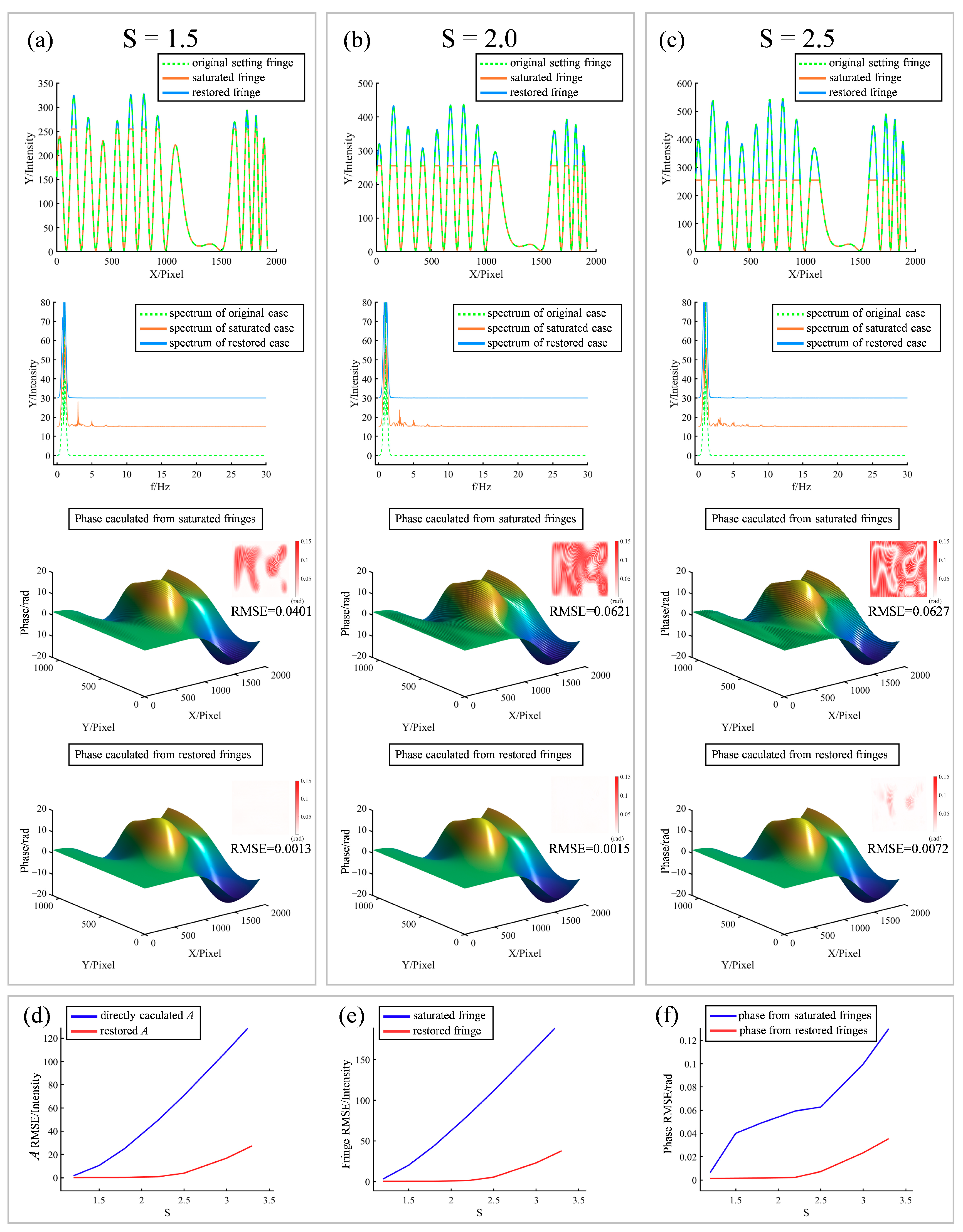Correction: Li et al. Fringe Projection Profilometry Based on Saturated Fringe Restoration in High Dynamic Range Scenes. Sensors 2023, 23, 3133
1. Abstract Correction
2. Figure Correction
3. Funding Correction
Reference
- Li, H.; Wei, H.; Liu, J.; Deng, G.; Zhou, S.; Wang, W.; He, L.; Tian, P. Fringe Projection Profilometry Based on Saturated Fringe Restoration in High Dynamic Range Scenes. Sensors 2023, 23, 3133. [Google Scholar] [CrossRef] [PubMed]

Disclaimer/Publisher’s Note: The statements, opinions and data contained in all publications are solely those of the individual author(s) and contributor(s) and not of MDPI and/or the editor(s). MDPI and/or the editor(s) disclaim responsibility for any injury to people or property resulting from any ideas, methods, instructions or products referred to in the content. |
© 2023 by the authors. Licensee MDPI, Basel, Switzerland. This article is an open access article distributed under the terms and conditions of the Creative Commons Attribution (CC BY) license (https://creativecommons.org/licenses/by/4.0/).
Share and Cite
Li, H.; Wei, H.; Liu, J.; Deng, G.; Zhou, S.; Wang, W.; He, L.; Tian, P. Correction: Li et al. Fringe Projection Profilometry Based on Saturated Fringe Restoration in High Dynamic Range Scenes. Sensors 2023, 23, 3133. Sensors 2023, 23, 5927. https://doi.org/10.3390/s23135927
Li H, Wei H, Liu J, Deng G, Zhou S, Wang W, He L, Tian P. Correction: Li et al. Fringe Projection Profilometry Based on Saturated Fringe Restoration in High Dynamic Range Scenes. Sensors 2023, 23, 3133. Sensors. 2023; 23(13):5927. https://doi.org/10.3390/s23135927
Chicago/Turabian StyleLi, Hongru, Hao Wei, Jiangtao Liu, Guoliang Deng, Shouhuan Zhou, Wenwu Wang, Liang He, and Peng Tian. 2023. "Correction: Li et al. Fringe Projection Profilometry Based on Saturated Fringe Restoration in High Dynamic Range Scenes. Sensors 2023, 23, 3133" Sensors 23, no. 13: 5927. https://doi.org/10.3390/s23135927
APA StyleLi, H., Wei, H., Liu, J., Deng, G., Zhou, S., Wang, W., He, L., & Tian, P. (2023). Correction: Li et al. Fringe Projection Profilometry Based on Saturated Fringe Restoration in High Dynamic Range Scenes. Sensors 2023, 23, 3133. Sensors, 23(13), 5927. https://doi.org/10.3390/s23135927




